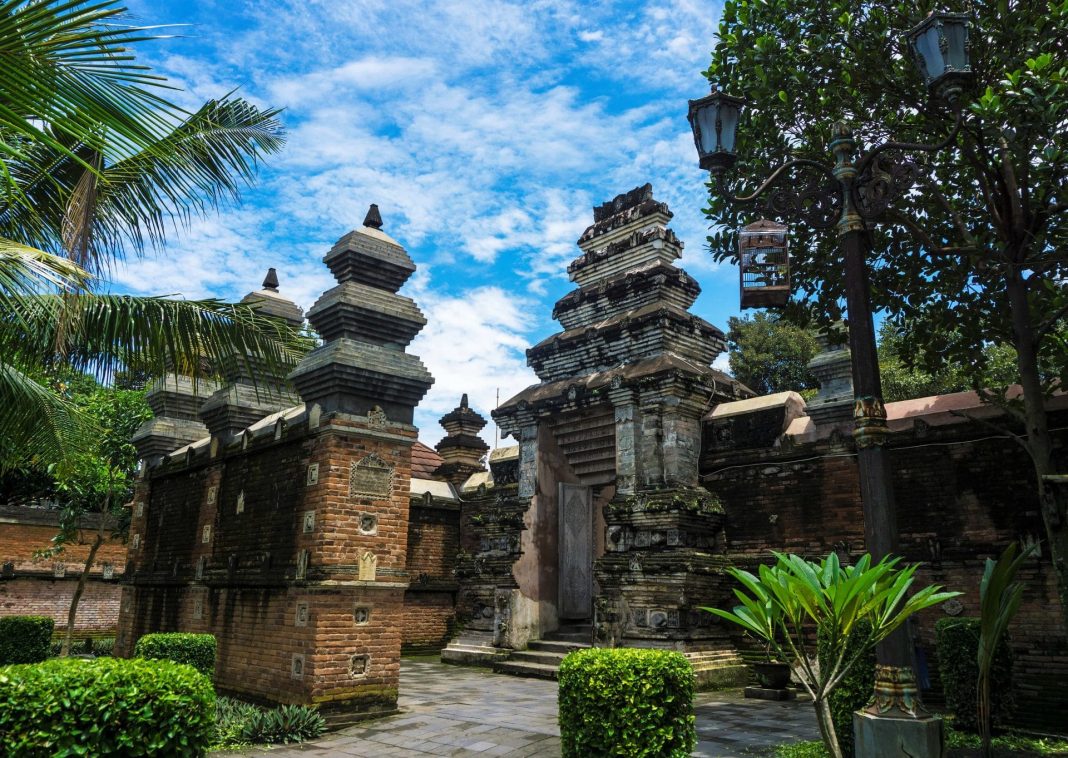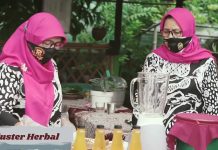As a city that has been established for hundreds of years, Kotagede has a very large cultural diversity. There are countless cultures owned by the former capital of Islamic Mataram. The point of interest that tourists can visit and enjoy while traveling in Kotagede.
Legacy of the Mataram Kingdom The grand mosque is located within the Tomb of Mataram Kings complex. This mosque is the oldest mosque in Yogyakarta. Apart from being active as a place of worship, the grand mosque is also often used as a place for community meetings in Kotagede.

The Tomb of Mataram Kings is located 100 meters from the Legi Market. In the cemetery, which is surrounded by large walls, gates, and other Hindu-style buildings, there are cemeteries of Panembahan Senopati, Ki Gede Penggahan, and Sultan Hadiwijaya.

An ancient bath called Sendang Seliran. It is said that this place was built by Panembahan Senopati and Ki Ageng Arrowing. Even though it is hundreds of years old, this bath still looks very well maintained and even looks Instagramable. Sometimes, many couples use this place as a pre-wedding spot.

Architecture and Buildings in the Kotagede Area
Bahu Dhanyang is the term for the consul of traditional houses in Kotagede. This structure uses wood material, with ornate carvings throughout. It is very easy to find a building like this in Kotagede, because almost every traditional house has a Bahu Dhanyang building.

Langgar Dhuwur

Langgar Dhuwur is a part of the building that cannot be separated from traditional houses in Kotagede. This building was used as a place of prayer for the people at that time. The shape is a multi-storey building, with Malay architecture, at the top it is used for worship, while at the bottom it is used as a bathroom and a place for wudhu. Currently the existence of Langgar Dhuwur is very rare, due to the development of traditional houses in Kotagede.
Kotagede Legi Market

The market is an important component of a city. Economic center and a gathering place for people from various backgrounds. Likewise, the market in Kotagede. Located ± 100 meters northeast of Grand Mosque of the Mataram Kotagede, Pasar Legi Kotagede is full of people in the morning and evening. Various kinds of daily necessities, special foods, animals, plants, etc. can easily be found here.
Kotagede hallway

Kotagede is famous for its narrow alleys that are easy to find when we come in to the residents’ villages. This hallway is an attractive object for photographers and tourists who want to just experience the traditional atmosphere of Kotagede.
Kotagede Wall
As a royal capital area is influenced the spatial pattern of the city and its supporting buildings. Now, we can still enjoy some of these buildings. Some of them become icons that cannot be missed from camera shots or just taking selfies against the background of these buildings.

Between Two Gates
It is one of the typical settlement forms in Kotagede which is also an expression of values of sharing. This residential environment is like a large house that is occupied by a large family with a high attitude of harmony and mutual cooperation. This can be seen from their attitude in giving up part of their house for common interests, in the form of a harmonious road.

Green Wall
Tembok in Javanese means wall, while ijo means green. Then, what is interesting about a green wall? Well, the green color of the Ijo Kotagede Wall does not come from paint but from the lush leaves of vines that cover the walls. This wall is actually part of one of the residents’ houses.

The existence of an old door in the middle of the wall makes the vintage rustic impression even thicker. The location of the Ijo Wall is not far from the Gang Soka gate. This Ijo Wall was viral on social media. So don’t be surprised if you stop by here, you will find some tourists taking pictures. Are you interested in taking pictures here too?
Silver Mosque

Not far from across of Gang Soka, there is a mosque which is very special for Kotagede residents. The name is Silver Mosque. It is called the Silver Mosque because the construction of this mosque came from the contributions of silversmiths in Kotagede.
Omah UGM
During the 2006 Yogyakarta earthquake, many traditional houses in Kotagede were destroyed. One of them is Parto Darsono’s Family House. With the spirit of preserving the local culture of traditional Javanese houses, UGM bought and rebuilt the damaged houses.

However, some of the remains of the destroyed house walls are still preserved as a memorial to this heartbreaking incident.
Now, Omah UGM is used as a center for heritage preservation in Jogja. Visiting here, you will be treated to distinctive traditional house building designs and ancient objects of artistic value. Don’t forget to take pictures in the front area or inside the house which is very instagram worthy!
Pesik House

Bong supit Pak Dharmo
Located on Pasarean street 4, Kotagede, precisely to the south of Legi Market, you will find a building as a legendary circumcision site from the Dutch colonial era with traditional techniques to laser light.
Typical souvenirs and snacks of Kotagede
Silver

This silver handicraft is famous in the Kotagede area of Yogyakarta. The majority of its citizens are silversmiths. Many of the works produced were then traded, including rings, necklaces, crossbars, miniatures, furniture and other decorations. The price is quite nice. For those of you who are jewelry enthusiasts, along the way of Kemasan and Mondoragan Kotagede are lined with silver shops.
Kipo
If you visit Kotagede, don’t miss this snack!! Kipo is a Kotagede typic snack made from a mixture of sticky rice, coconut milk, salt, and sugar then steamed and baked. Small in size and green in color with several parts showing the result of combustion. It is called Kipo because it comes from the question “iki opo” (what is this)?, by people who will eat it.

Waru Flower
One of these traditional Kotagede cakes is made from rice flour which is molded into a flower-shaped mold from the Waru Tree. Kembang Waru Cake is made from a mixture of flour, eggs, sugar, butter, vanilla, and cinnamon which is put into a flower waru mold, then baked.

The shape should resemble an eight bough flower which means hasto broto or the eight main roads. Among them are the sun, moon, stars, water (water), kismo (land), maruto (wind), clouds, and the ocean. It’s hope that after eating, we can understand and practice the eight main roads.
Sido Semi
Sido semi is a food stall located right in front of the parking lot of the Grand Mosque of Mataram Kotagede on the east side. This shop has been open since the 1950s. In this place we can enjoy traditional food and drinks that we rarely find in other places. However, at this time the shop was closed. However, we can still enjoy the typical culinary delights of the Sido Semi stall in the north of the Silver Mosque of Kotagede.
Monggo Chocolate
After getting tired of walking around, you can stop by to buy Monggo chocolate. This special chocolate center made by foreigners who fall in love with Yogya culture is only in Kotagede. Besides the showroom, you can also see the production process there.

Yangko

This yangko really represents Kota Gede, because yangko itself originated with kiyangko which stands for (ki tiyang Kota Gedhe), which means this is Kota Gede people. Yangko is made from steamed sticky rice and has the meaning of strengthening brotherhood, such as the texture of the sticky rice which tends to be sticky.
Ukel and Banjar
Ukel and banjar made in the same way are only distinguished at the time of finishing. Ukel is a form that has been given a finishing in the form of refined sugar, while the banjar is before being given the finishing. These crispy and fluffy pastries are made from wheat flour and eggs as the main ingredients.
Legomoro

Legomoro is similar to lemper, which food is derived from glutinous rice filled with chicken meat wrapped in banana leaves. What makes it different is how to wrap it. Lemper usually uses banana leaves and sticks on the right and left, while Legomoro uses banana leaves tied with bamboo ropes. There is also a unique way to tie it, some use two ropes and three ropes.
Jadah Manten

Unique and most favorite traditional snacks in Kota Gede Yogyakarta. The shape is very unique and tastes good, because it is made from sticky rice filled with savory chicken meat. This jadah is more delicious because it is baked and can be enjoyed with a cup of hot tea or black coffee.
Sate Sapi Karang “Pak Prapto”

This satay has a unique taste dish that has an unusual taste. What is unique and legendary about Sate Karang is its dish that uses beef along with rice cake served with spicy lodeh tempe dish with thin coconut milk like ketupat sayur. And the taste is sweet, savory, and spicy.
Kotagede Festival
Keroncong Kotagede Market

Keroncong music is also included in one of the arts found in Kotagede. The Kotagede Keroncong Market Festival is held regularly every year.




